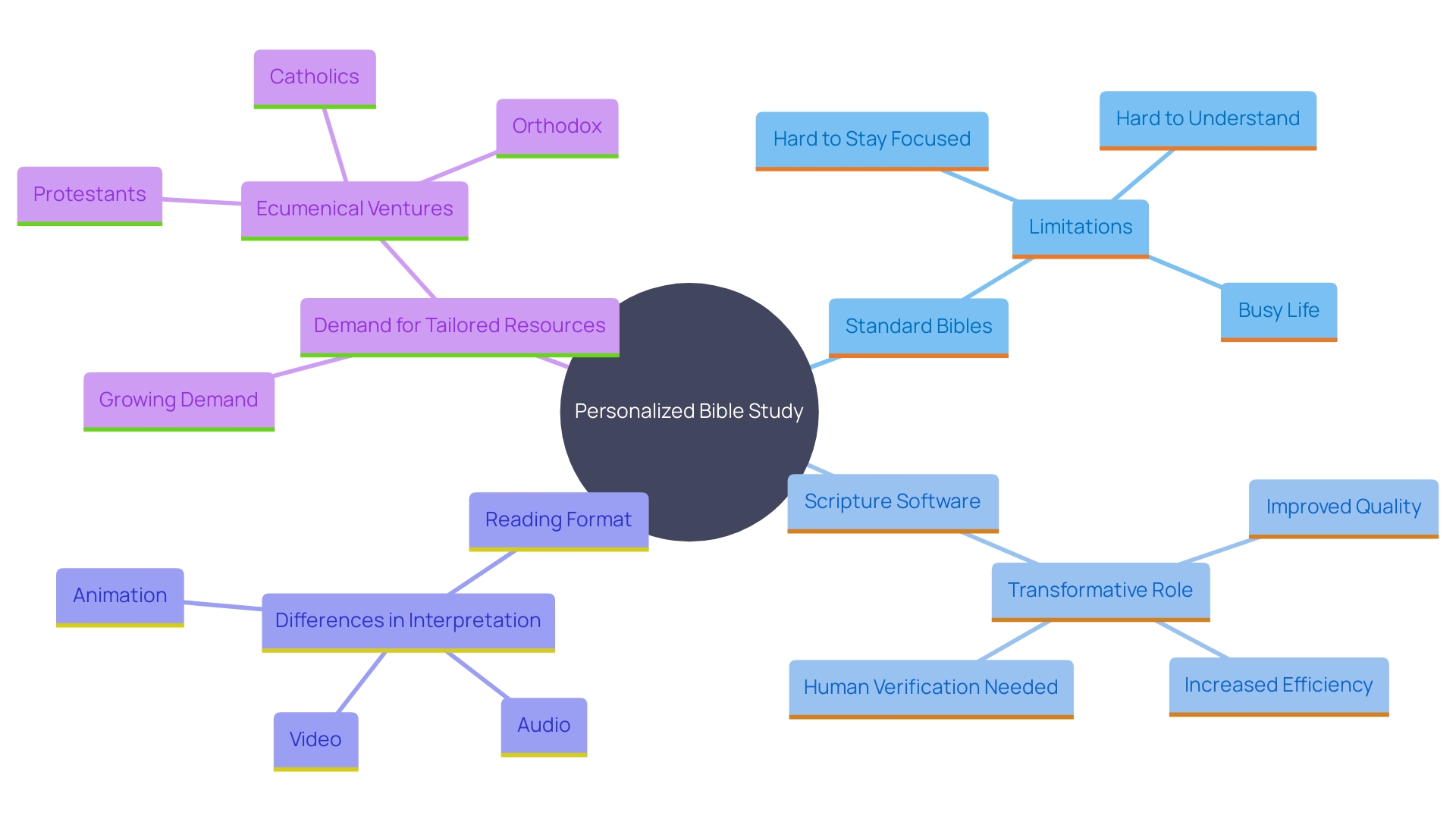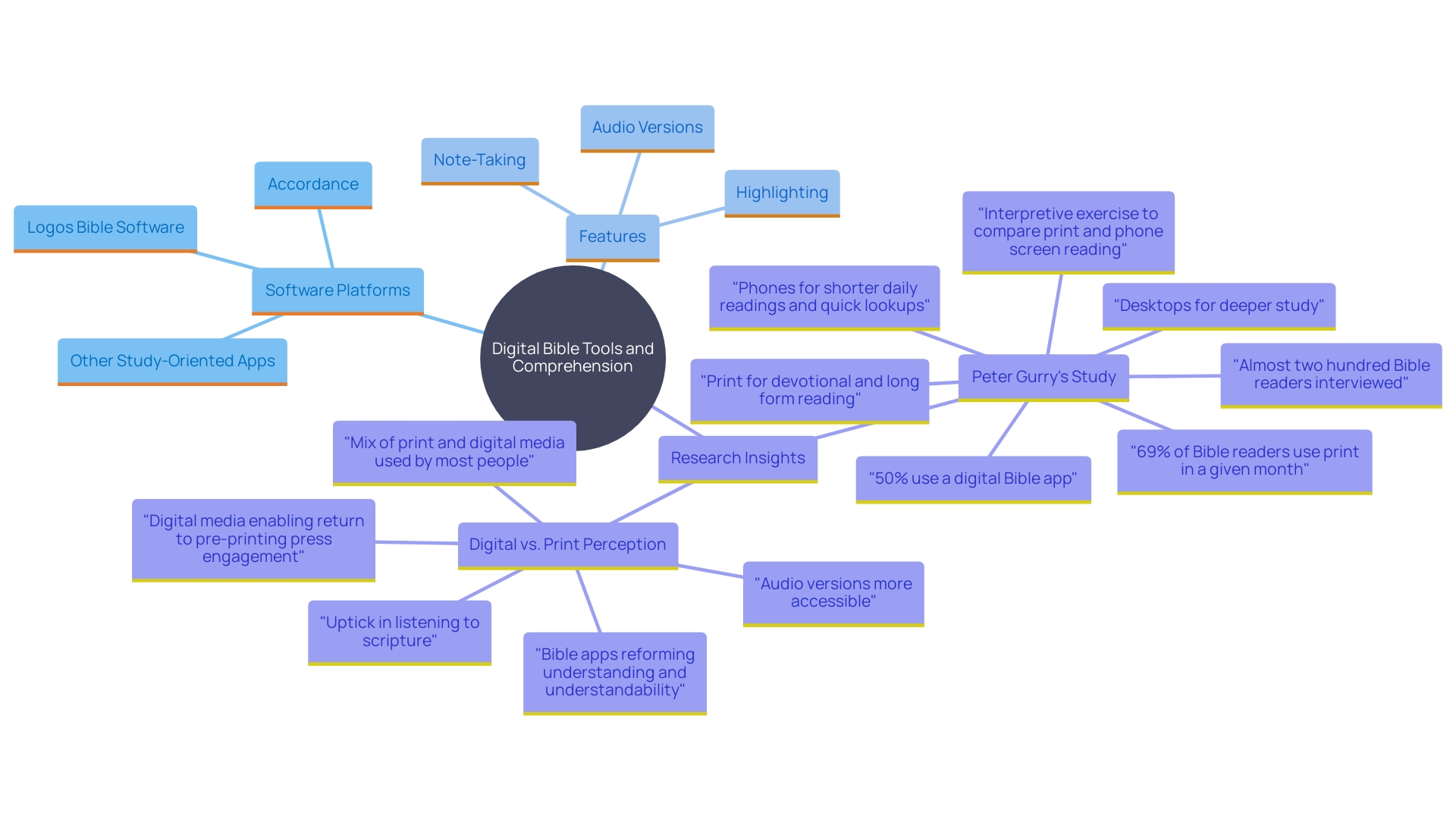Introduction
Crafting a custom Bible is a journey that merges personal faith with modern innovation, transforming how scripture is read and understood. While traditional Bibles hold a timeless charm, they often lack the personalized elements that resonate deeply with individual readers. The advent of Bible software has bridged this gap, offering tools that allow for a highly customized study experience.
From choosing specific translations and books to incorporating advanced study aids and character profiles, these digital resources make the scripture more relatable and accessible. This article dives into the steps to create a custom Bible, exploring how to select content, gather resources, organize and print your Bible, add personal touches, and even leverage digital alternatives. Whether through professional binding or DIY methods, discover how to create a Bible that truly reflects your unique spiritual journey and preferences.
Understanding the Limitations of Standard Bibles
Standard Bibles, though beautifully crafted, often come with limitations in personal relevance and customization. They might miss out on specific verses or translations that resonate with you deeply or lack the study aids you crave. Recognizing these limitations can inspire you to create a custom text that reflects your unique spiritual journey, preferences, and needs.
The arrival of scripture software has transformed how Christians interact with texts, making it more accessible and comprehensible. For instance, software developers have meticulously addressed different versifications in scriptural data, ensuring consistency across various formats. In an examination involving nearly two hundred scripture readers, it was discovered that reading the book of Jude on a phone compared to a printed version could elicit different interpretations and emotions. Print readers often focused on themes of God's judgment, while phone readers highlighted God's faithfulness.
Additionally, digital resources such as Scripture Toolbox provide unmatched capabilities for more profound exploration. Utilizing AI, these tools deliver detailed character profiles, illuminating historical contexts, relationships, and significant occurrences, thereby presenting a complete perspective frequently overlooked in conventional learning approaches. These advancements in technology are reforming how average Christians understand and engage with the Bible, making personalized study plans and character studies more accessible than ever.
The success of seasonal resources and specialized content, such as the meditations by Dominican Father Timothy Radcliffe, also highlights the increasing demand for customized resources. By connecting traditional and digital techniques, personalized Bibles can provide a profoundly meaningful and enriching experience that aligns with individual faith journeys.

Choosing Your Content: Selecting Books and Translations
The initial stage in crafting your personalized scripture is choosing the volumes and translations that resonate most with you. Whether it's the NIV or ESV translations, the choices you make should reflect your personal spiritual journey and beliefs. Recent studies show that digital tools and apps are transforming how readers interact with religious texts, making it more accessible and personalized. For instance, scripture software that accounts for different diversification can help streamline your selection process, ensuring a cohesive reading experience. Take time to research and reflect on these choices, as they will form the foundation of your personalized scripture, aligning with your unique spiritual needs.

Step 1: Gathering Resources - Finding and Downloading Texts
Once you’ve chosen your content, the next step is to gather the necessary resources. Seek out reputable sites where you can download the texts you want, ensuring they are available in formats that suit your needs, such as PDFs or text files. It's essential to verify the copyright status of the materials to avoid any legal issues down the line. As emphasized by the Logos Study Application, ensuring the alignment of resources with your philosophy is essential. They have been actively addressing and removing titles that do not align with their values, which underscores the importance of selecting appropriate and authorized content. Additionally, the digitalization of religion brings about various social, political, and legal ramifications, as discussed in the workshop organized by the Center for Asian Legal Studies and the Asia Research Institute. Understanding these aspects can further guide you in making informed and conscientious choices when gathering your resources.
Step 2: Organizing Your Content - Creating Your Custom Layout
With your texts in hand, it’s time to organize them into a layout that works for you. Consider how you’d like to structure your Bible—will you group by testaments, themes, or another method? Utilizing advanced software tools and templates can significantly enhance this process. For instance, Toolbox offers a comprehensive Character Study feature that leverages AI to provide detailed insights into scriptural figures, their historical contexts, and thematic connections. Such tools not only make your personalized scripture visually appealing but also enhance your reading experience by providing deeper insight and easier navigation. Imagine the convenience of having a layout that seamlessly integrates these insights, making your spiritual journey more engaging and enlightening.
Step 3: Printing Your Bible - Choosing the Right Paper and Printer
When choosing to print your personalized scripture, it is crucial to thoughtfully choose the materials to guarantee longevity and sharpness. Opt for high-quality paper that can endure frequent handling, and choose a printer capable of producing sharp, clear text. If you are uncertain about the capabilities of your home printer, professional printing services offer a reliable alternative. These services specialize in book printing and can deliver a polished, high-quality final product. As technology in digital printing continues to advance, there are now more options than ever before, including print-on-demand for smaller print runs. Remember to clarify your objectives and resources to determine the best printing choice for your personalized book.
Step 4: Binding Your Bible - Options for Professional and DIY Binding
Guaranteeing the longevity of your personalized scripture begins with the binding procedure. Professional binding services offer a variety of styles, from luxurious leather to elegant cloth covers, catering to different tastes and durability needs. Leather, known for its longevity and classic appeal, is a popular choice, while cloth covers provide a robust yet aesthetically pleasing alternative. Incorporating materials like Tyvek, renowned for its resistance to tearing and aging, can significantly enhance the durability of the text. For those inclined towards a hands-on approach, the world of DIY binding opens up endless possibilities. Using materials such as chipboard, which offers a sturdy and cost-effective solution, or Japanese tissue, valued for its strength and natural fibers, allows for a highly personalized touch. Companies like Atlas and BLICK Art Materials provide a comprehensive range of high-quality bookbinding supplies, ensuring you have the best tools for the job. 'Whether choosing professional assistance or investigating do-it-yourself methods, the binding of a personalized book can be both a creative and satisfying undertaking.'.
Adding Personal Touches - Custom Covers, Margins, and Annotations
To truly make your custom scripture a unique reflection of your spiritual journey, consider adding personal touches that resonate with you. Custom covers can be a beautiful expression of your faith, much like how the Large Print Edition Daily Devotions from the KJV Brown Faux Leather Devotional is designed for readability and elegance, making it an ideal gift for loved ones. Customizing your scripture can also mean incorporating margins for annotations, allowing you to jot down thoughts, prayers, or insights as you read. This approach not only changes your sacred book into a treasured memento but also enhances your connection to the text, akin to how the Life Application Commentary elaborates on significant themes and doctrines for a more comprehensive understanding. As Kathy Magruder uncovered in her journey with a 318-year-old Scottish text, these personal touches can transform an ordinary book into an extraordinary spiritual companion, rich with history and personal significance.
Digital Alternatives - Creating Custom Study Bibles with Software
For those who lean towards a digital approach, a plethora of software options are at your fingertips for creating custom Bibles for learning. These platforms not only enable easy customization but also offer powerful features like note-taking and highlighting. As per research conducted by Peter Gurry, these applications are changing how ordinary Christians comprehend the Scriptures, with mobile editions now accessible for phones and tablets. By splitting audiences in churches, Gurry found that digital readers and print readers often perceive scripture differently, with phone readers emphasizing God's faithfulness while print readers noted God's judgment. Utilizing tools such as Toolbox for scripture, users can explore character analyses and author perspectives, offering a valuable, engaging experience that conventional approaches may overlook. Explore these applications to find one that fits your preferences, ensuring your custom Bible is accessible on various devices.

Conclusion
Creating a custom Bible is an empowering journey that allows individuals to tailor their spiritual experience in a way that resonates deeply with their personal beliefs and practices. By recognizing the limitations of standard Bibles and embracing the advancements in Bible software, readers can curate a collection of texts and translations that truly reflect their faith journey. This process not only enhances understanding but also fosters a deeper connection to scripture.
The steps outlined—from selecting content and gathering resources to organizing layouts and printing—provide a clear roadmap for anyone looking to embark on this creative endeavor. Each phase offers opportunities for personalization, whether through professional binding options or DIY methods that infuse individual creativity. Adding personal touches, such as annotations and custom covers, transforms the Bible into a cherished keepsake, rich with personal significance.
For those inclined toward digital solutions, the availability of software tools ensures that customization is not limited to printed formats. Digital platforms provide interactive features that enhance the study experience, making scripture more accessible and engaging. By exploring these various avenues, individuals can craft a Bible that is not only a reflection of their faith but also a companion on their spiritual journey, enriching their understanding of scripture in profound ways.




